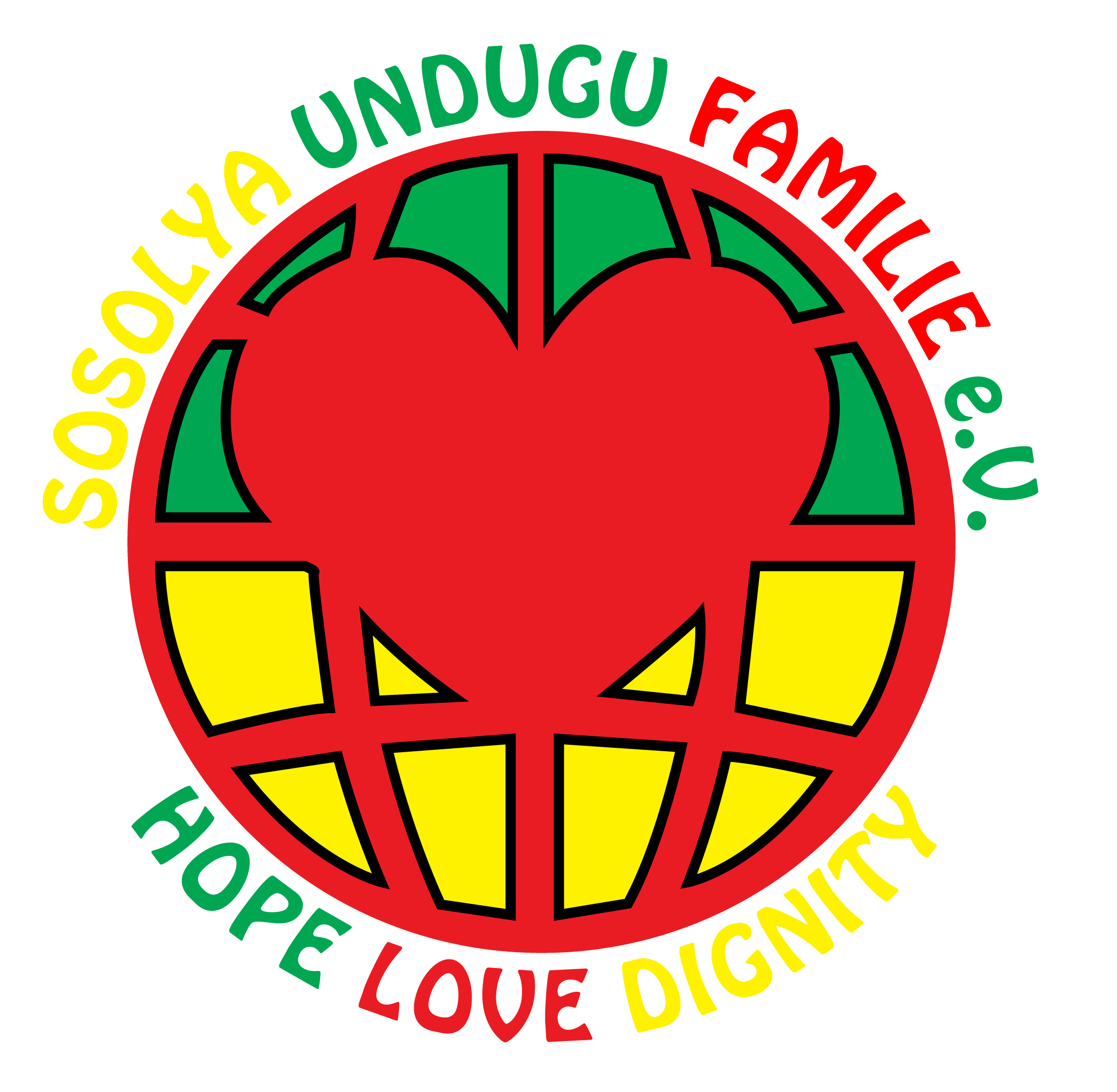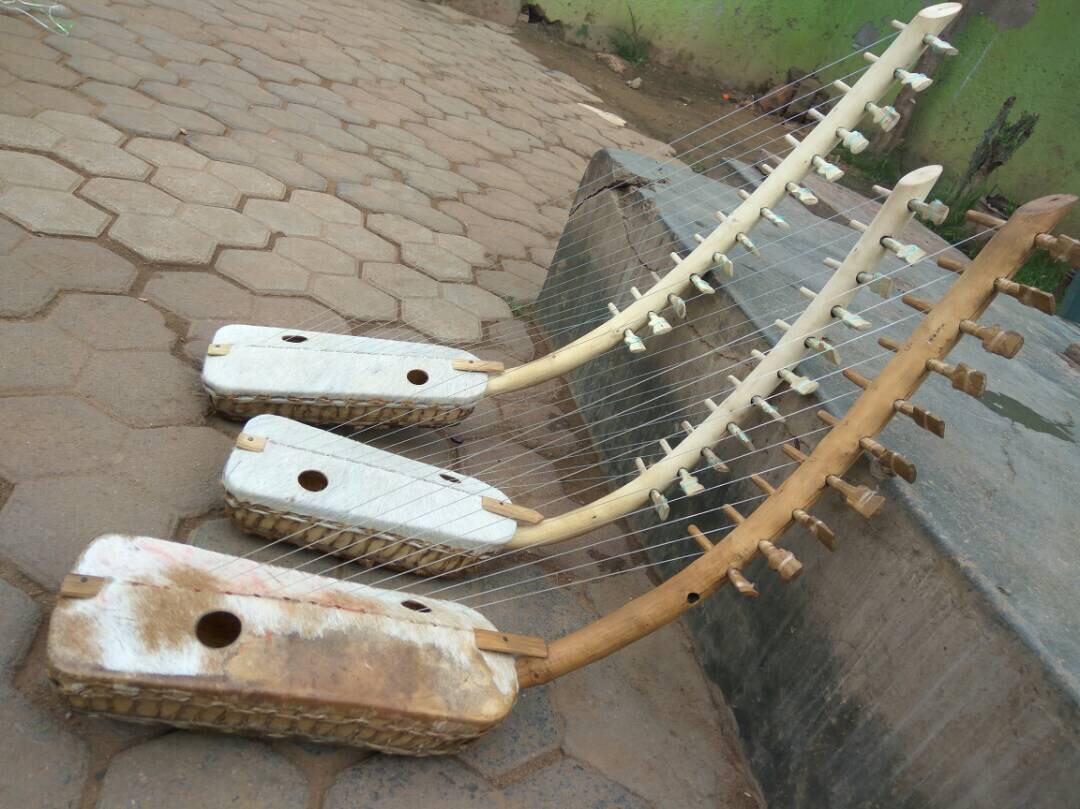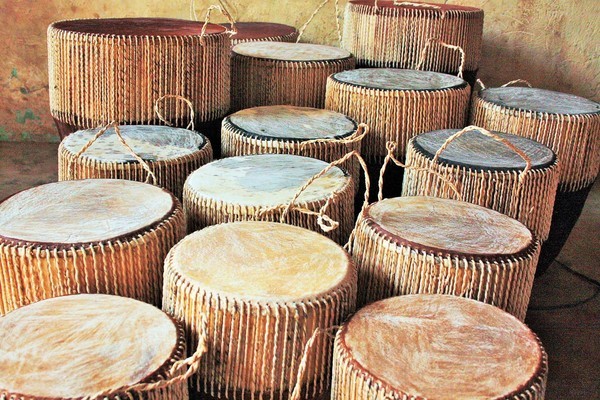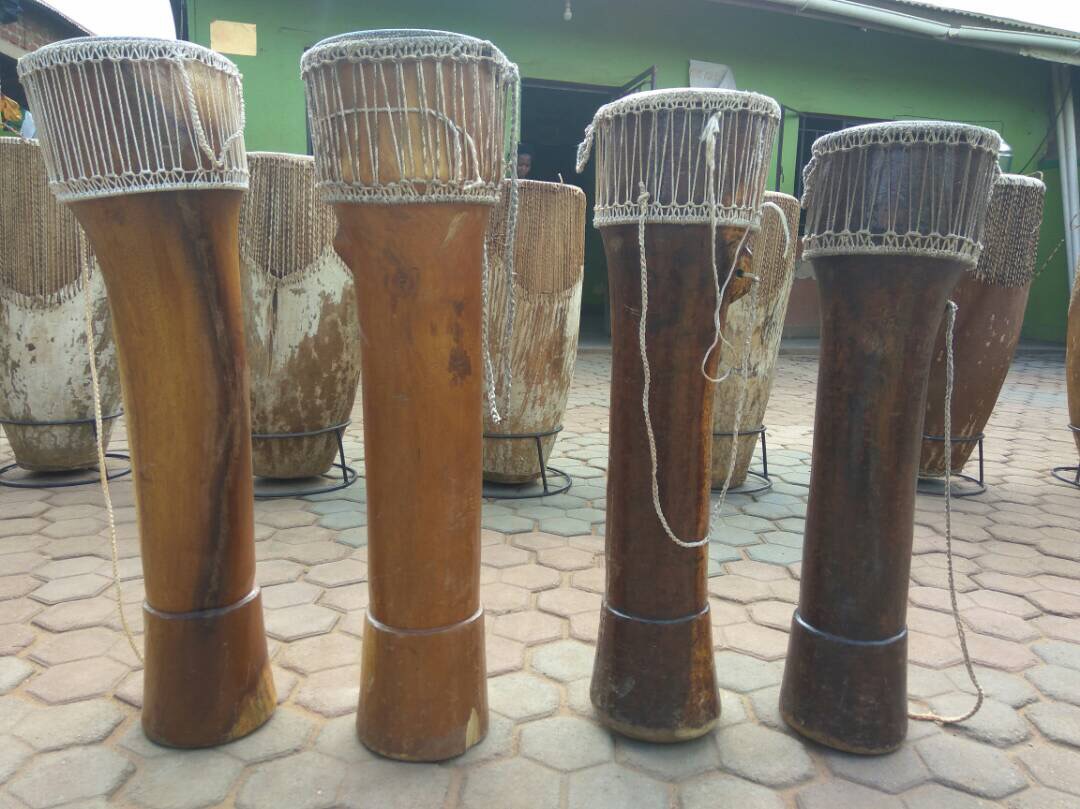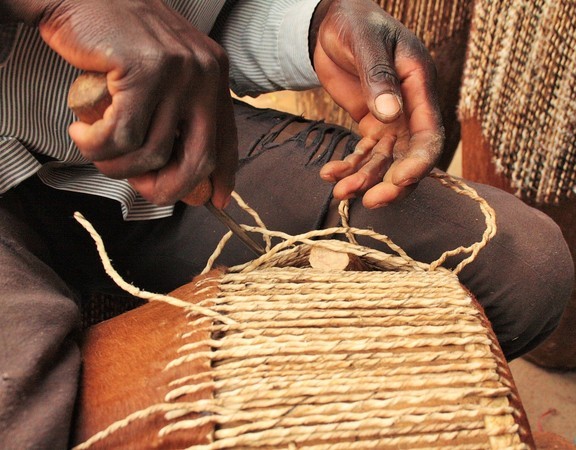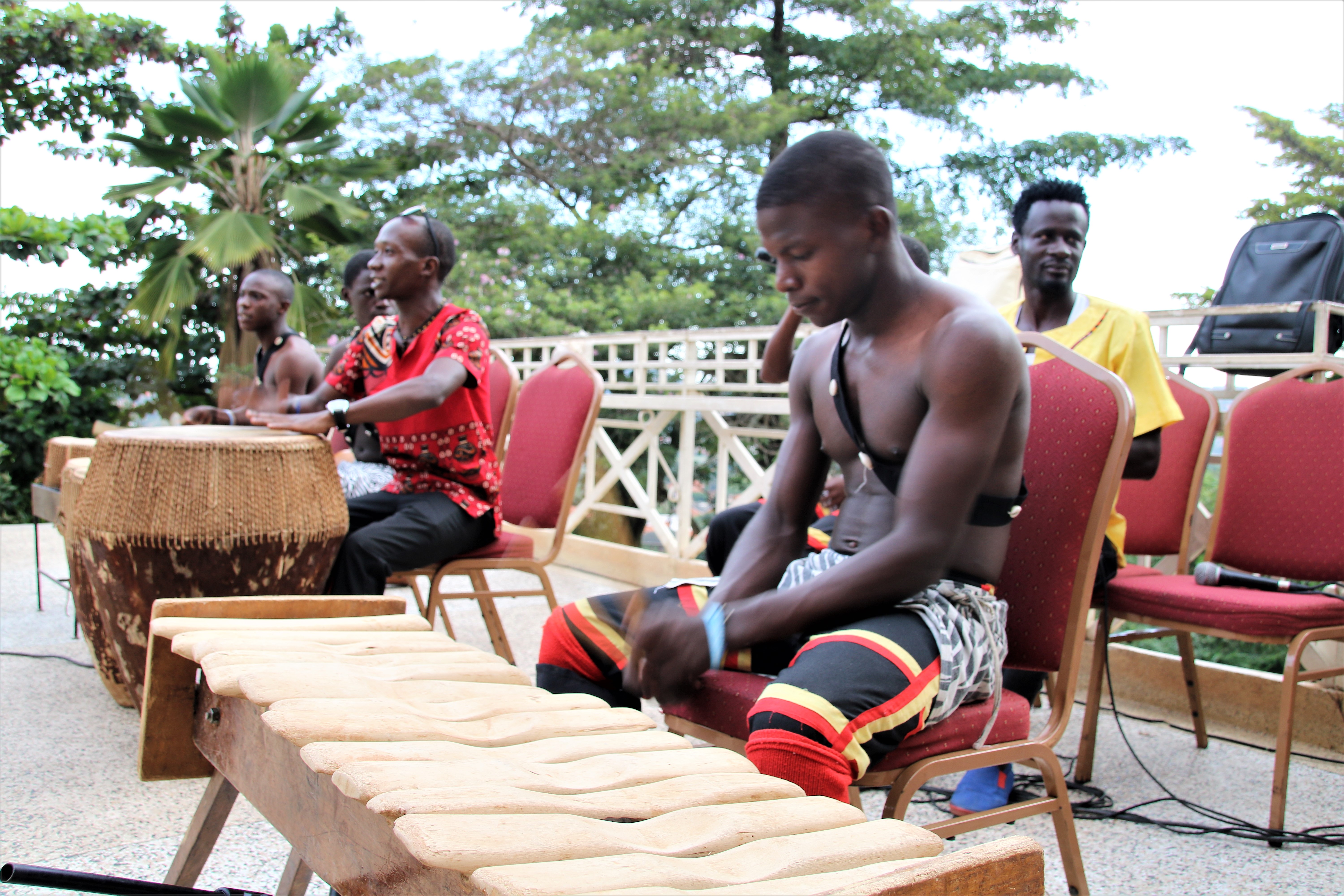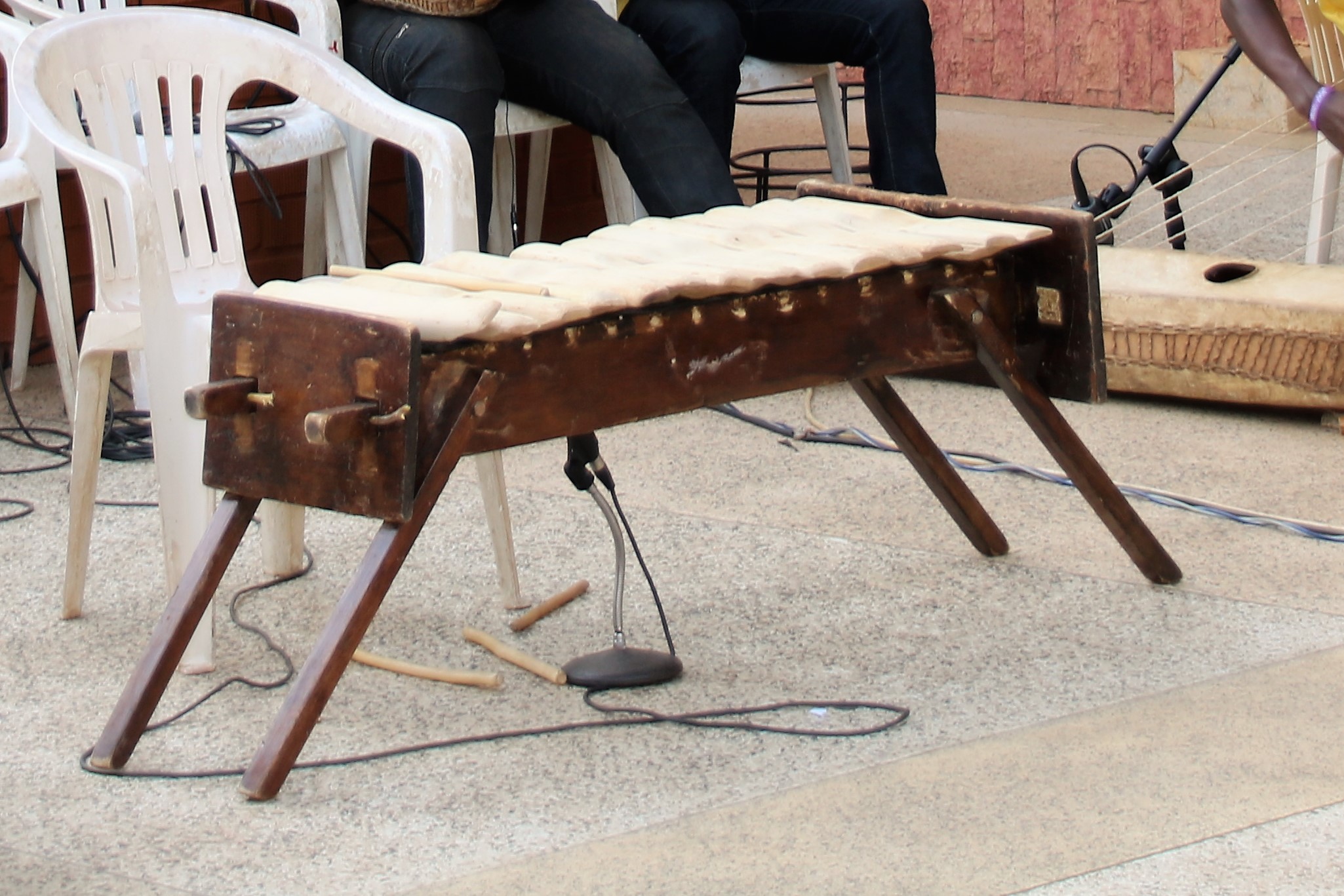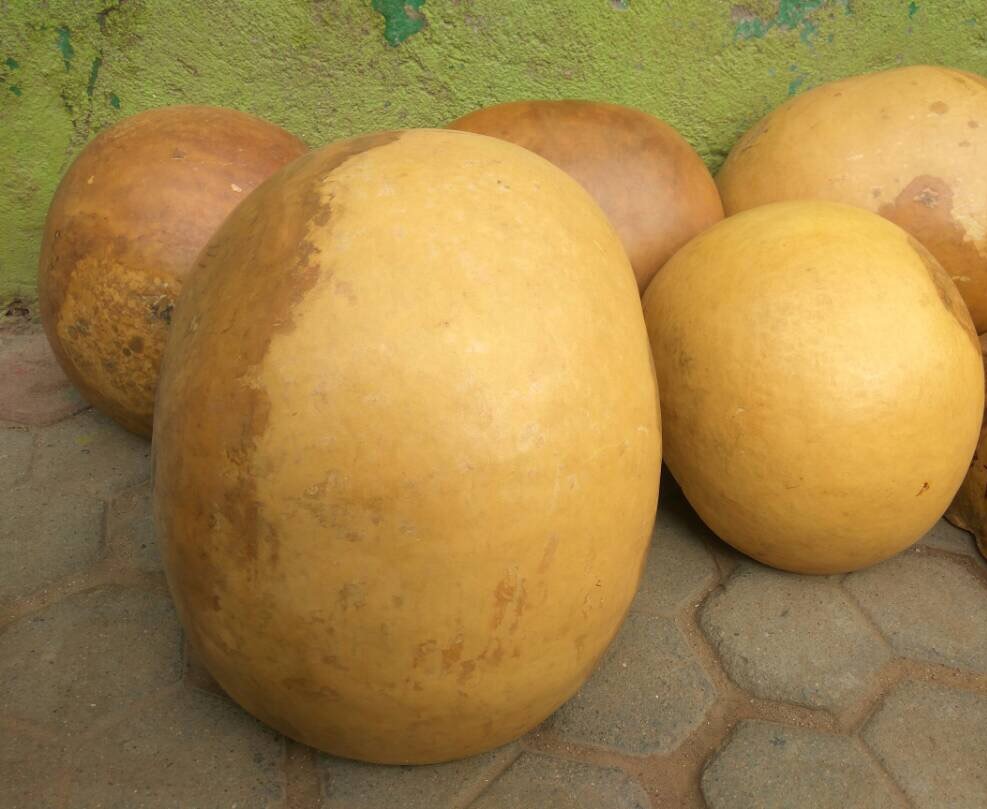The Sosolya Undugu Dance Academy teaches the children traditional Ugandan instruments. Some of those instruments are ancient and there are just a few people left who can manufacture and play them. By passing the ability to play those instruments to the young talents at the Centre the unique Ugandan culture can be preserved.
Are you interested in buying such a unique instrument? Please contact us.
The Adungu-Family
The Adungu are traditionally played by a tribe in the northwest of Uganda: the Arua.
There are several different Adungu: Solo, Middle, Tenor and Bass. The Adungu differ in their way of being played, their size and their tuning.
All Adungu are built up of a stick and a sound box, which is covered by an antelope or in rare cases by Komodo dragon or python skin skin. Between the stick and the sound box 7-13 strings are clamped.
Drums
Following are the most common drums at the Centre:
The Omujjaguzo are from the kingdom of Buganda. They are played with sticks and they are the biggest of all drums. They were traditionally played for the king of Buganda: the Kabaka.
The Obujjongo are two drums with different sounds. If combinated the drums can be used to tell stories.
The long drum is played by clamping it between your legs. The long drum player can create 3 different sounds which only this drum can produce. The drumhead is made out of python or komodo dragon skin.
The Empunyi (the highest pitch), the Entabuzi (the middle pitch) and the Embuutu (the lowest pitch) is a group of three drums always played together. It’s an art to play those instruments from Buganda because they can be played in many different ways and have a great variety in sounds.
The Ntenga drums from Buganda are rather small drums, which are played in a big group of Ntega players. The separate Ntenga are tuned like the different tones of the Amadinda. The songs for the ntenga are about ancient happenings in the palace.
Xylophone
The differences between a chromatic xylophone and a Ugandan one are not just visual. The Amadinda is only tuned once by carving the keys with a knife, that is why all other instruments have to fit the Amadinda. Furthermore the Amadinda is not tuned in a chromatic but in a pentatonic scale. Short Amadinda can be played by 3 people but there are special Amadinda which can be played by up to 12 players at the same time. Using two sticks the right hand plays a melody and the left hand accompanies.
Other Instruments
For some dances special instruments are required. The Agwata is made out of pumpkins and has many uses: as an instrument, a dance detail or a stool.
Another important instrument are rattles. There are those played by hands and those which are tied to the feed. Both are important for the dances.
The Agwara are wind instruments from the Langi. Each Agwara only plays one tone. That is why the Langi traditionally use 12 players for a song.
Enanga (piano) is an ancient instrument from Buganda. It was used to tell the Kabaka what was happening and what was going to happen at the palace. It was played for the Kabaka only. The player of the Enanga was called Omulanga.
The main part of an Endigidi (also called African violin) is a single string which is played with a cow haired bow. This instrument is played in a pentatonic scale. The player improvises by laying the fingertips softly on the sting to higher the sound.
